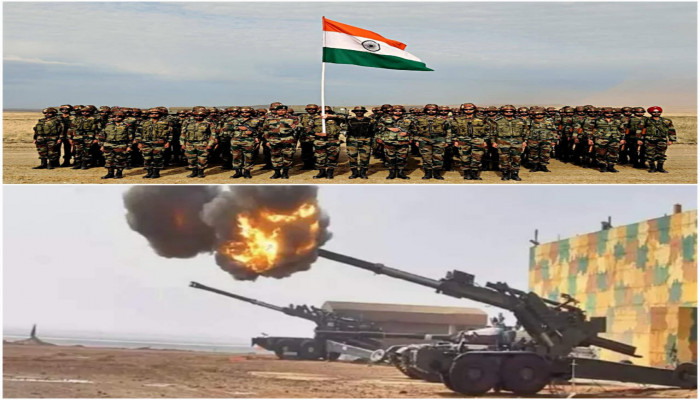In a first, Army completely utilises Rs 35,000 cr of capital acquisition budget, 95% goes to indigenous suppliers
- In Reports
- 04:02 PM, Apr 23, 2025
- Myind Staff
The Indian Army has reached a significant milestone by successfully utilising ₹35,000 crore from its budget meant for long-term investments. This is the first time the army has fully tapped into these funds, which are specifically allocated for acquiring or developing military equipment and infrastructure, according to a Ministry of Defence source who spoke to Firstpost. In the financial year 2024–25, the Army set a new record by spending funds from its Capital Acquisition Budget like never before. The ₹35,000 crore spent represents a massive 152% jump compared to the roughly ₹13,900 crore used the previous year, making it the highest capital spending in the Army’s history. Even more remarkable is that 95% of this amount was spent within the country.
When asked about the importance of these record-breaking figures, a source, who asked not to be named as they weren't authorised to speak publicly, said, “It will most definitely give a boost to the Indian Army’s operational preparedness. But what it will also do is boost economic growth through the multiplier effect, since this is quite a big amount. Of course, we expect significant job creation and that the expenditure will attract private investments.”
The multiplier effect is an economic idea explaining how an initial spending amount can trigger a much bigger rise in overall income and economic growth. When money is spent on defence equipment, it not only creates jobs but also increases demand for materials and services needed to support that production. The people working in these areas then use their income to buy other goods and services, keeping the spending cycle and growth going throughout the economy. Emphasising the scale of this investment drive, the source revealed another key detail: the Indian Army has finalised 26 major contracts valued at ₹85,000 crore in recent months. Notably, 23 of these deals were given to Indian companies.
“The Make in India push is clear. This indigenous manufacturing of defence equipment is likely to create a defence industry ecosystem in the country,” a source said, pointing to the government’s ongoing effort to cut reliance on foreign imports and develop a homegrown defence industrial base.
The Indian Army's total spending of almost ₹1 lakh crore in FY 2024–25, covering both capital acquisitions and related expenses, is expected to impact India's GDP positively. This expenditure reflects a strong move towards self-reliance, improving military capabilities, and stimulating the economy through defence investments.
The terms “capital acquisition budget” and “capital outlay” are frequently used in defence budgeting, but they do not mean the same thing.
Capital outlay is a broad Defence Budget category covering various long-term investments. It comprises spending on land acquisition, upgrading infrastructure, and funding projects such as building storage facilities, roads, airfields, research centres, and base development. Recent documents have provided details about the capital outlay and its expenditure. The funds allocated for capital acquisition are used to buy new weapons and equipment, invest in major military platforms (such as tanks, missiles, aircraft, and drones), and modernise the armed forces.
In simple terms, the capital acquisition budget is the money allocated solely for purchasing military equipment from Indian or foreign suppliers. It doesn't include funds for infrastructure or construction projects. Because the figures related to capital acquisition and spending are sensitive, they are not disclosed in the budget documents.







Comments